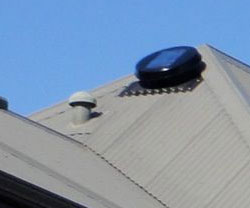Service Experts Loft Ventilation
Service Experts specializes in just about everything related to heating and air conditioning. One of the issues that falls into this realm is ventilation. If you’re concerned that inadequate ventilation is negatively impacting the quality of air in your home, you can schedule an appointment with Service Experts. When they arrive for the appointment, they will perform an inspection to find out if your suspicion is correct. If it is, they will pinpoint the root cause of this problem. In many cases, this type of problem is the result of inadequate loft ventilation.
What Impact Can Loft Ventilation Have on Air Quality?
If a loft isn’t well-ventilated, it can cause moisture to accumulate in this space. When that happens, it’s almost always followed by mold growth. As mold begins growing and spreading through a home, it will consistently spread its spores into the air. Not surprisingly, this can significantly lower the quality of indoor air. Research has found that mold can result in indoor air creating mild irritation for otherwise healthy people. And for people who have allergies or other existing conditions, the impact can be anywhere from moderate to severe. Because of its negative impact on air quality, it’s very important to properly ventilate a loft.
How Do You Ventilate a Loft?
Properly ventilating a loft requires three main components. Those components are an:
- Intake
- Exhaust
- Baffles
An intake is the part of a ventilation system that brings fresh air into a loft space. Soffit vents are commonly used as the intake source for lofts. The exhaust source is where indoor air will go out. Instead of building up and getting excessively hot, this component of a ventilation system will allow air to easily flow out of a loft. There are several different types of vents that can be used for this purpose. The role of baffles in the loft ventilation process is to ensure that nothing creates an obstruction that prevents air from flowing through the space in a loft.
What Will Happen After a Loft is Ventilated?
If mold is already growing in your home, it’s important to have it removed. Keep in mind that if you didn’t also take action to ventilate your loft, the mold growth in your home would likely return since the source of moisture would still be present. By properly ventilating this space, you can ensure that mold is gone once and for all. While improving the quality of the air in your home would be enough of a reason to ventilate your loft, that’s not the only benefit that will result from this improvement.
Not only can mold lower air quality, but it can also cause damage to your home’s structural elements. This type of damage can also result from the excess heat that can build up in an unventilated loft. Additionally, all of the heat created by a lack of ventilation can raise the temperature throughout your home. By ventilating your loft, you can prevent this from happening and lower your monthly utility bill.

Categories
- Home
- Loft Ventilation Companies
- Attic Breeze Loft Ventilation
- Dustspot Loft Ventilation
- Glidevale Loft Ventilation
- Lapvent Loft Ventilation
- Sears Loft Ventilation
- Senergy Now Loft Ventilation
- Service Experts Loft Ventilation
- Service Magic Loft Ventilation
- Vent Masters Loft Ventilation
- Loft Ventilation Information
- Loft Ventilation Products
- Types Of Loft Ventilation
